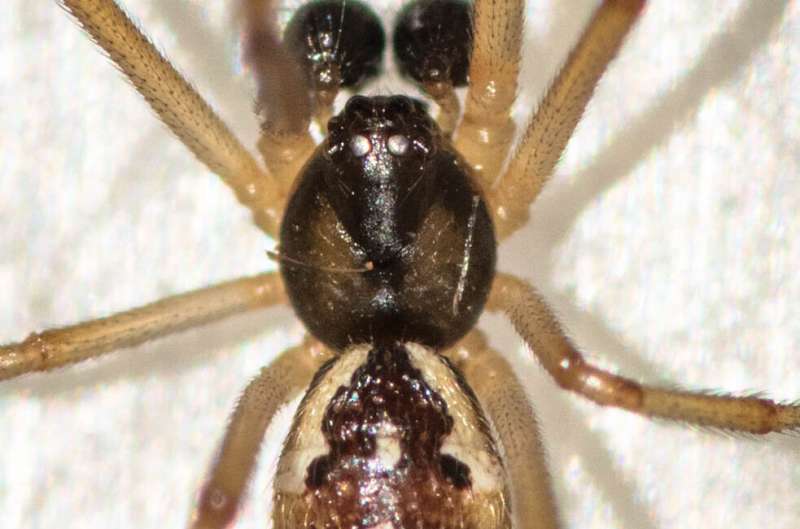This article has been reviewed according to Science X's editorial process and policies. Editors have highlighted the following attributes while ensuring the content's credibility:
fact-checked
peer-reviewed publication
trusted source
proofread
Invasive brown widow spiders found to host novel bacteria related to chlamydia

Invasive brown widow spiders across three continents were highly infected with a single strain of Rhabdochlamydia, a bacterium that is related to major pathogens of humans and animals, including chlamydia. A bite from these spiders, however, will not infect people with chlamydia.
Up until now, Rhabdochlamydia was found in only a few organisms—a tick, an isopod, a cockroach, and one other spider—and even then, was a rare occurrence in all these organisms.
Dr. Monica Mowery and colleagues at Ben-Gurion University of the Negev compared microbial communities in populations of brown widow spiders collected in South Africa (the likely native range of the spider) and invasive populations in Israel and the United States. The overwhelmingly predominant bacteria, Rhabdochlamydia, was found in 86% of spiders surveyed. It was also found in the female spider's eggs, indicating that mother spiders transmit the bacteria to their offspring.
"Our results suggest that this dominant, widely prevalent chlamydial bacteria has an important role in the invasive brown widow spider," explained Dr. Mowery, an assistant professor at the City University of New York and a former post-doctoral researcher at BGU.
The study was published recently in Scientific Reports.
Characterizing potentially important and widespread bacterial symbionts is a step towards understanding their relevance to ecological interactions and responses to rapid environmental changes. The high prevalence of Rhabdochlamydia in all spider populations tested suggests it may have an important functional role and could contribute to the spider's invasion success.
The brown widow spider, Latrodectus geometricus, is an urban invasive species that outcompetes native spider species found in warm climates worldwide. These spiders have neurotoxic venom and can be dangerous to young children and the elderly.
Microbial associates can influence a species' invasive spread and success in a new environment and can shift or be lost during the invasion process. The South African brown widow spiders had overall more distinct strains of bacteria compared to newer arrivals in Israel, where brown widows were first found in Tel Aviv in 1980 and in the United States, where spiders expanded from southern Florida in the 2000s. This higher microbial diversity supports the idea that the invasive brown widow spider originated in southern Africa.
Additional researchers included Prof. Yael Lubin and Prof. Michal Segoli from Ben-Gurion University of the Negev, Prof. Jennifer White, Dr. Eric Chapman, and Laura Rosenwald from the University of Kentucky, Thembile Khoza from the South African National Biodiversity Institute, and Robin Lyle from the Agricultural Research Council, South Africa.
More information: Monica A. Mowery et al, Endosymbiont diversity across native and invasive brown widow spider populations, Scientific Reports (2024). DOI: 10.1038/s41598-024-58723-2
Journal information: Scientific Reports
Provided by Ben-Gurion University of the Negev




















